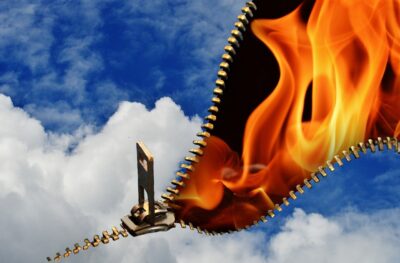 I’ve reflected before on the power of surprise in novels. But I’d like to share a few thoughts now about a certain kind of surprise—perhaps the most heart-wrenching kind, because it’s so relatable. That is, the “good” character who turns out to be bad, or the “bad” one who finally shows himself to be good(ish).
I’ve reflected before on the power of surprise in novels. But I’d like to share a few thoughts now about a certain kind of surprise—perhaps the most heart-wrenching kind, because it’s so relatable. That is, the “good” character who turns out to be bad, or the “bad” one who finally shows himself to be good(ish).
The Good Are Bad
It’s true, of course, that no human being is fully good or bad, and our fictional personages should reflect that. But sometimes in a novel, when the world is coming apart, everybody’s hope is pinned on the advent of a certain character. “He‘ll know what to do.” “She can defend us.” “If only we can hold out until X arrives.” Then they arrive. And oops. They’re on the other side after all. Think of Saruman the White in Lord of the Rings. There’s a similar horrible surprise in Game of Thrones, where blood is not thicker than water. And even in a police procedural like a certain one of Louise Penny’s, somebody isn’t so much on the side of the law as we thought.
Wow! Does that sort of betrayal pack a wallop! Along with the characters, we’ve become hugely invested in the salvation Person X promises. It’s an emotional earthquake when they fail us. What a great device to lob a grenade of unexpectedness into a predictable genre story!
And the Bad Are Good
On the other side is the seeming villain who turns out not to be so bad after all. I think these must be scarcer in books, because I’m having trouble thinking of examples. One classic is Snape, in the final Harry Potter. He may be an awful person, but he isn’t the enemy. And that’s a good thing to remember: not everybody in the place of the villain is villainous. He or she may simply not share our agenda but otherwise be a decent person following faithfully their own lights. That breaks the stereotype, doesn’t it? Good! And what if the person the protagonist feared most had a moment of menschitude and let her escape when she was in their clutches? It brings a flush of emotion to the reader’s cheeks, because life really is full of faith-restoring little reveals like that.
So, here’s a way to drive home what we all know about fictional characters—they, like real humans, should be a mix of good and bad. Sometimes, that mixture can confuse other personages or encourage them to put their faith in the wrong savior. Other times, people may be inclined to prejudge them as worse than they are. Now, that’s an interesting twist! Can you think of examples you’ve read?

Ken
Well said! Memorable characters are not cut out of cardboard, and can surprise us just as much as flesh-and-blood humans.
Shutta Crum
Thanks, Niki. Good post. I love it when a character turns out to be totally different. The best, of course, was Agatha Christie’s The Murder of Roger Ackroyd.
Shutta
Niki Kantzios
Thanks, colleagues. Yes, ol’ Roger is a good example–only one of Christie’s stable of great characters. The mistress of the twist!